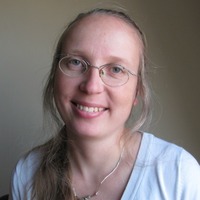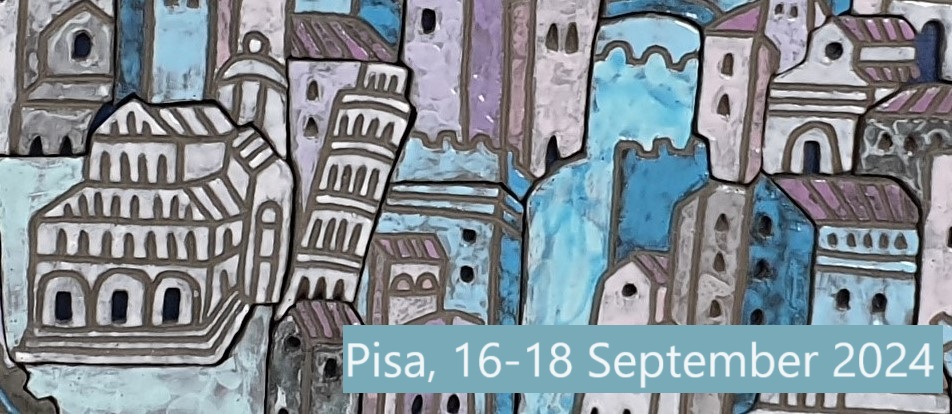Invited speakers

Juliana Bowles, University of St. Andrews, UK
Title: A Reasoning-based Framework for Safe Prescribing in the Elderly
Abstract: Medication errors are an extremely common cause of patient harm worldwide and yet mostly preventable. In particular, the therapeutic effectiveness and safety of drugs over time is a significant concern, especially for patients over 65. It is the case that age-related physiology changes renal elimination and liver metabolism, and affect pharmacokinetics and pharmacodynamics. Moreover, factors such as physiologic changes, decline in functional abilities, reduced homoeostatic mechanisms, diseases associated with ageing and frailty, as well as polypharmacy (when 5 or more medications are taken) are risks associated with developing clinically significant drug-drug interactions. For these reasons, a group of medications known as Potentially Inappropriate Medications (PIMs) can be dangerous in the elderly and should be avoided. However, tackling PIMs effectively in practice is challenging, time-consuming and error-prone since the criteria underlying the definition of PIMs are complex and subject to frequent updates.
This talk presents a comprehensive automated framework intended for a hospital setting which combines formal rules to represent PIMs criteria and inference engines, to detect, solve or minimise undesirable side-effects of PIMs.

Madalena Chaves, INRIA, Université Côte d’Azur, France
Title: Circadian clocks: modeling and characterization of cycle dynamics
Abstract: Many living organisms have evolved a circadian timing system to synchronize their physiology and behavior with the Earth’s light/dark cycle. The core mechanism underlying circadian rhythms is a gene regulatory network consisting of about 5 genes whose expressions oscillate with a period around 24 hours.
A large variety of mathematical models have been proposed to describe circadian rhythms: but how to compare their respective properties, cycle dynamics, or agreement to biological data? Focusing on the mammalian circadian clock, we developed methods to analyze and systematically characterize the oscillatory dynamics. We propose a segmentation of the circadian cycle into eight stages based on three of the core clock proteins, which provides a benchmark for comparison and validation of circadian cycles generated by a large range of models.

Karoline Faust, KU Leuven, Belgium
Title: Tools for microbial network analysis and community modelling
Abstract: Microbial communities play important roles in a number of applications, ranging from health and food production to waste water treatment and bioremediation. To engineer microbial communities, we need to know how community members interact with each other and their environment. However, it is hard to systematically elucidate these interactions experimentally. Methods to infer interactions from microbial sequencing data have received much attention, but evaluations have shown them to be of low accuracy. In the first part of my talk, I will focus on how to extract biological hypotheses from noisy microbial networks. In this context, I will present a number of tools we developed for this task, including manta, anuran, mako and microbetag. While microbial networks are useful for explorative studies, quantitative models are required to design consortia or to predict targeted interventions to shift communities towards desired compositions. I will present a few modelling approaches commonly applied to microbial communities, which we implemented in the miaSim R package, and illustrate their limitations on data we collected for synthetic gut communities grown in controlled conditions. Finally, I will discuss possible next steps.

Corrado Priami, University of Pisa, Italy
Title: Digital health opportunities
Abstract: Digital health is a broad term that covers telemedicine (interpreted as distance monitoring of patients and digital interaction with healthcare providers); wearable technologies to collect physiological parameters in real time; electronic health records to have access everywhere to the clinical history of patients; digital therapies and computational development of therapies; health system engineering to optimize the operations and costs of healthcare systems to enhance the quality of the service; analytics to make medicine predictive and preventive by exploiting the data to develop biomarkers and research hypotheses.
Digital health is becoming pervasive in the scientific community and in the clinical practice. It spans over different market sectors like pharmaceutical, medical, biotechnological and even telemedicine and patient-centric care. Digital health is characterized by highly multi- and interdisciplinary approaches and its scientific grounds lay in many different disciplines including bioinformatics, computation and systems biology, artificial intelligence, cybersecurity, nutrition, medicine and medical engineering, robotics, simulation, sensor networks, ethics and law, economy.
The talk will explore where the community of CMSB can have an impact and make a difference by also presenting some examples of how digital health can provide added value at the intersection of physicians and patients.
Invited tutorial

Irina Balaur, University of Luxembourg, Luxembourg
Title: Graph databases for integration, exploration and analysis of complex data
Abstract: Graph databases (GDBs) are becoming increasingly popular across scientific disciplines
(including finance, physics, biomedicine, social network analysis), being highly suitable to
store, query and integrate complex heterogeneous data.
In this tutorial, I will introduce GDB approaches for integration, exploration and analysis of data
describing complex systems. In a GDB, data is represented using a graph: an object or a
concept is represented as a node, and relationships between objects are represented as
edges. To ensure a minimum information, I will start with a summary of relational databases,
then I will detail two of the most frequently used GDB paradigms:
i) the Resource Description Framework (RDF), which is a World Wide Web Consortium (W3C:
w3.org/TR/rdf-concepts) standard vocabulary used to describe resources and their
relationships in the form of triples, and
ii) the labelled property graph model (e.g., www.neo4j.com), where properties of both data and
inter-relationships can be stored as attributes of the nodes/edges of the graph.
I will outline relevant tools and analytical methods (including path finding, connectivity analysis
and subgraph mining) and I will provide practical examples of the use of GDBs in systems
biomedicine, such as in the study of neurodegenerative and cardiovascular diseases.
